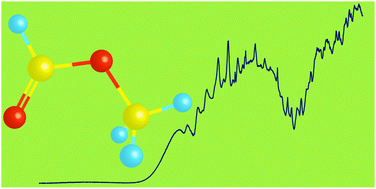Electronic state spectroscopy of methyl formate probed by high resolution VUV photoabsorption, He(i)photoelectron spectroscopy and ab initio calculations
Abstract
The first ab initio calculations of the vertical excitation energies and oscillator strengths are presented for the neutral electronic transitions of

- This article is part of the themed collection: Quantum molecular dynamics and control

 Please wait while we load your content...
Please wait while we load your content...